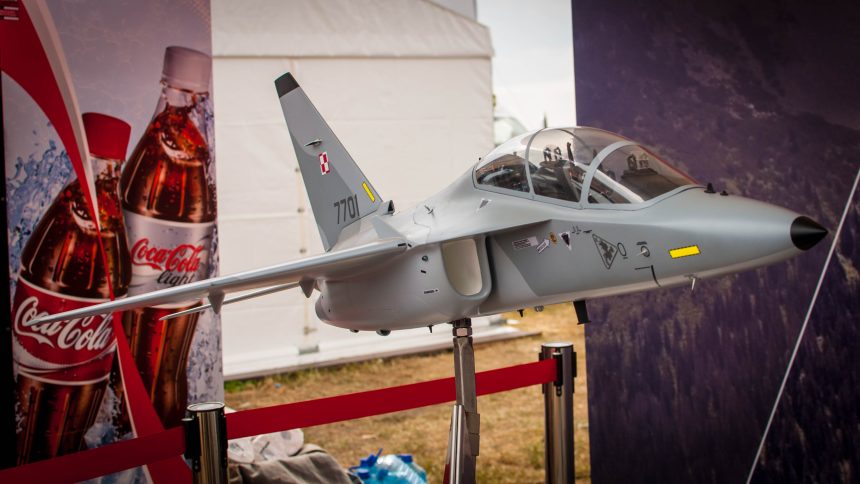Poland expands the Deblin training aviation base. The Initial M-346 Master Advanced Jet Trainers are in production.
According to the media buzz around the Polish defense-related outlets, Poland is going to receive the initial two examples of the Alenia Aermacchi M-346 Master AJT (Advanced Jet Trainer) quite soon. As Szczepan Głuszczak, Spokesman for the General Command of the Polish Armed Forces, stated, the first two aircraft wearing the Polish roundels are already in production.
This means that a revolution is taking place at the Polish aviation training facilities, since finally Poland is going to be capable of training the pilots for flying the fifth generation fighter aircraft, the acquisition of which is planned by the Polish Air Force in the upcoming years (probably until 2020).
The “Master,” the Italian cousin of the Russian Yak-130 trainer (both designs share a large portion of the genotype), is going to become the backbone of the training programs pursued by the Polish Air Force, replacing the obsolete Iskra trainers.
Nonetheless, it must be noted that not only are the Poles willing to modernize their pilots training, but they are also intending to create a fifth generation fighter training facility at the Dęblin Airbase: Alenia Aermacchi representatives stated that the Polish base, along with the Italian Lecce-Galatina air base, both operating the Master, may start offering services within the scope of training for the fifth generation fighter pilots for third parties that may not be able to afford establishing a full-scale training system in the first place.
Meanwhile, according to IHS Jane’s, Poland is willing to proceed with the initiative created by the Air Force Institute of Technology (Instytut Techniczny Wojsk Lotniczych, ITWL) – the “Grot 2” aircraft.
During the conference, related to the helicopter programs in the Polish Army, Colonel Ryszard Szczepanik working as the director of the institute stated that Grot-2 initiative is to be continued with the Motor-Sich company from Ukraine, providing the track-proven engine. Initially, the jet was to be equipped with the Honeywell/ITEC F124-GA-100 powerplant, as Jane’s states. Motor-Sich’s Director, as Jane’s reports, stated that Grot-2 jet could use “the AI-222-28F design” powerplant developed at the Ivchenko/Progress design bureau, destined to be applied in the Chinese Hongdu Aviation L-15 jet trainer.
However, even though the Grot’s airframe is similar to that of Master’s, Poland considers this design to become the successor of the Su-22 Fitter attack aircraft. Nonetheless, this role is being already taken by a UAV-dedicated airbase, and partially divided between the F-16 fighters and the M-346 acquisition.
Common sense would also make us point to lack of budget, needs, and finally, the export prospects, meaning that the Grot-2 project is probably not going to happen. Secondly, most of the Polish indigenous jet designs have been unsuccessful, mainly due to the lack of a proper know-how and potential which should be possessed by the Polish industry.
Moreover, one should take it into account that IHS Jane’s bases its report on information provided by the Polish NCSS think-tank, however, it must be noted that this organization is tied to “Law and Justice” party, which has just won the election in Poland, and which is driven towards consolidation and reinforcement of the Polish armament industry. Hence, the rumours pertaining the Grot-2 programme may be just another issue, fueling the political discussion in Poland.
Image Credit: Jacek Siminski















